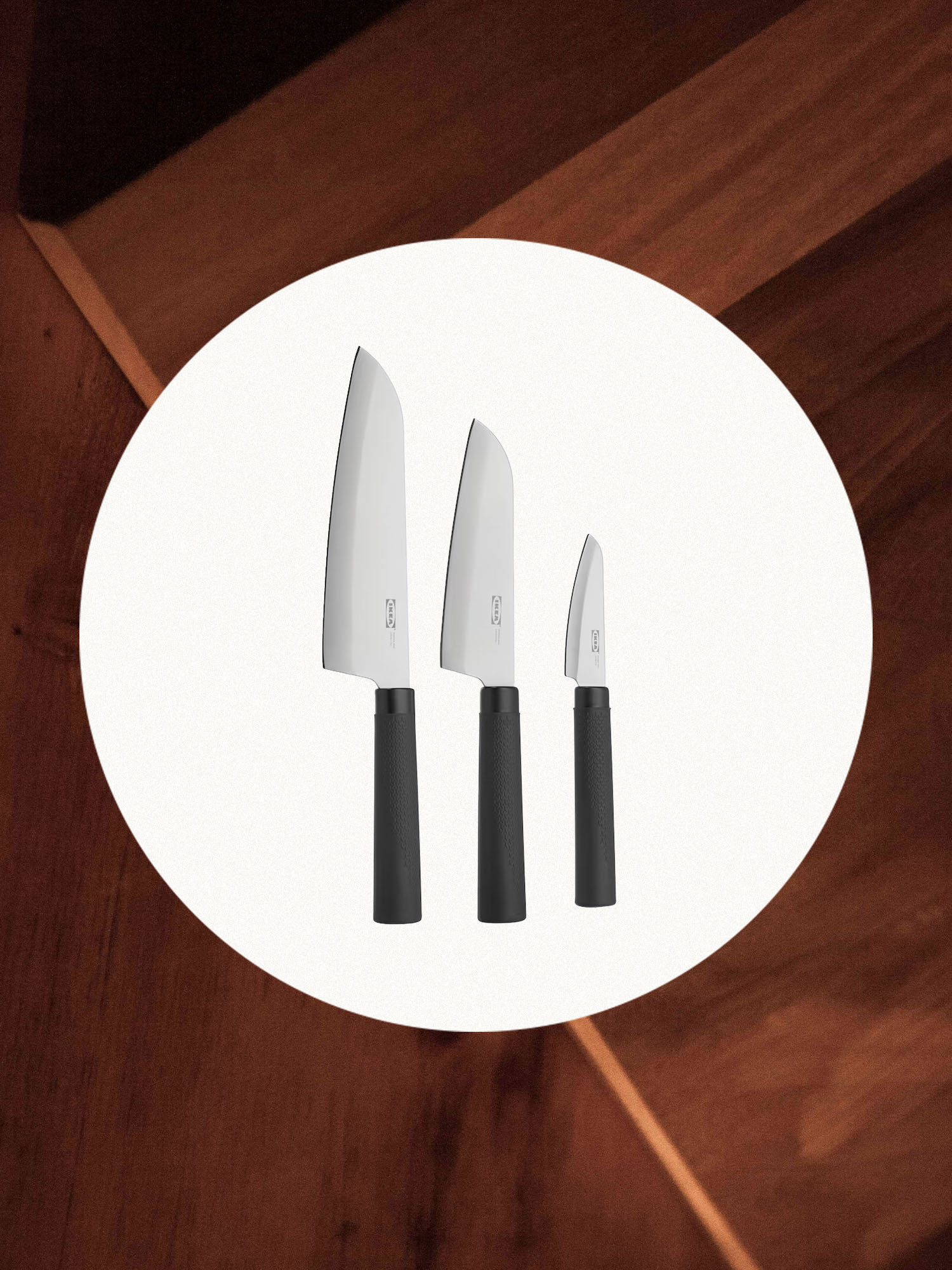We may earn revenue from the products available on this page and participate in affiliate programs.
Who can forget the excitement you feel when furnishing your first apartment? I can’t. The countless trips to Target, the cartloads of items from IKEA. While I was happy to scour Facebook Marketplace for a dresser and build my coffee table, there was one thing my grandmother warned me not to skimp on. “You need a good set of knives,” she told me. And to me, that meant spending big.
I quickly learned knives are hard to shop for, especially as a novice cook. For the most part, you can’t test or hold them to determine their comfort, weight, and if they’re even any good. Weeks went by and all my money at the grocery store was going to precut food. So to tide me over, I picked up IKEA’s $10 (now $13) Förslag three-piece knife pack. “They’ll keep me going until I find the perfect set,” I said. Little did I know, these were the perfect ones. Nearly six (!) years on, these original three knives are holding up great and are still the only ones I own and use for everything.
IKEA Förslag Knife Set
Förslag 3-Piece Knife Set, IKEA
The Förslag knives were designed by Aaron Probyn in 2015 and launched the following year. The U.K.-based designer, who has also collaborated with brands like West Elm and Crate & Barrel on kitchen essentials, had a simple brief: “Design a well-formed set of knives that are affordable, yet pay attention to detail and care for every user.”
For eight years now, the Förslag set remains the same, with its stainless steel blade and polypropylene and synthetic rubber handle inspired by Japanese design. “There’s a strong Japanese influence in the general silhouette of the knives, while reworked to be more user-friendly,” says Probyn. “With the handle being rubber coated, we wanted to add additional texture to give extra grip when the knife is in use and wet.”
That’s not to say my journey with the knives hasn’t been—er—choppy. When they got blunt three months in, I nearly threw them out. But instead, I went back to IKEA and bought the Skärande sharpener for $13 (now it’s $15), so I can give them a good filing every six to eight weeks. Together, these two surprisingly long-lasting finds continue to be a match made in heaven.
IKEA Skärande Knife Sharpener
Skärande Knife Sharpener, IKEA
Because I know the skeptics out there are thinking, “There’s no way you can get quality knives at IKEA,” I asked three chefs to share what they look for when shopping for affordable cooking knives. So whether you too want to jump on the Förslag train or invest in something that’s more a step up, here’s what Alan Casillas (executive sous chef at The Cape, A Thompson Hotel), Maggie Trujillo (culinary director for Aerlume, Aqua by El Gaucho, and El Gaucho Bellevue), and Aaron Clayton (NBA and NFL 11-time All-Star performance chef and founder of Honed Staffing) had to say.
What do you look for when buying affordable knives?
Maggie Trujillo: Pick it up and gauge your comfort with the weight and the motion achieved while chopping.
Aaron Clayton: Pay attention to the type of steel (is it prone to rusting?), how it feels in your hand, and whether the weight and length are manageable.
Alan Casillas: Look at the shape and edge of the knives’ handles and the material they’re made of.
What are your favorite affordable knives?
Casillas: Wusthof and Global are my favorites [because of] the quality of steel and because they are are absolutely beautiful.
Trujillo: Victorinox and Cuisinart are easy to find and both have sets of five for under $100.
Clayton: Tojiro knives have steel that will last a long time and aren’t difficult to sharpen, plus the fit and finish are great for the price point.
How often do you sharpen your knives?
Trujillo: There’s no set time. I sharpen based on usage and use a Norton oil stone to do so.
Clayton: I hone my knives every time I use them, so I can get away with sharpening them only twice a year.
Casillas: I use a sharpener every three days to keep the blades’ edge stable and in good condition.
What are your top sharpening tips?
Casillas: The way you hold the knife and the angle at which you hold it are key. Take the knife at a 45-degree angle and run it over the sharpener back and forth at least 20 times on each side.
Trujillo: Perform a “tomato test” to assess how smoothly and cleanly the knife slices through a tomato.
Clayton: Take your time, make sure you are working the entire length of the blade evenly, and let the weight of the knife do the work; you don’t need to use a lot of force.






